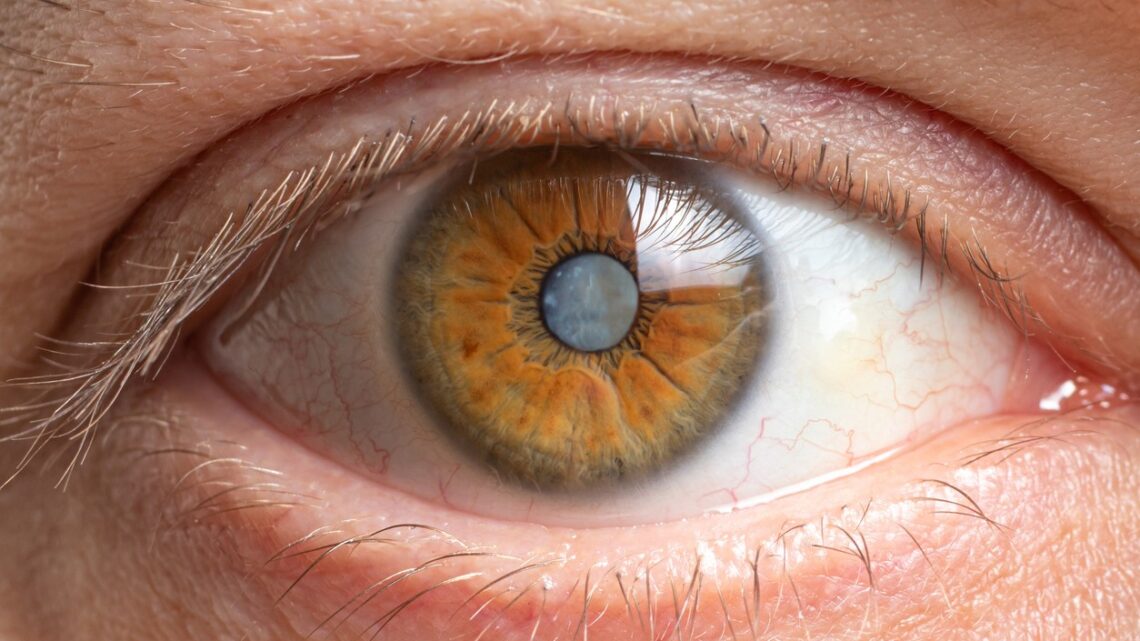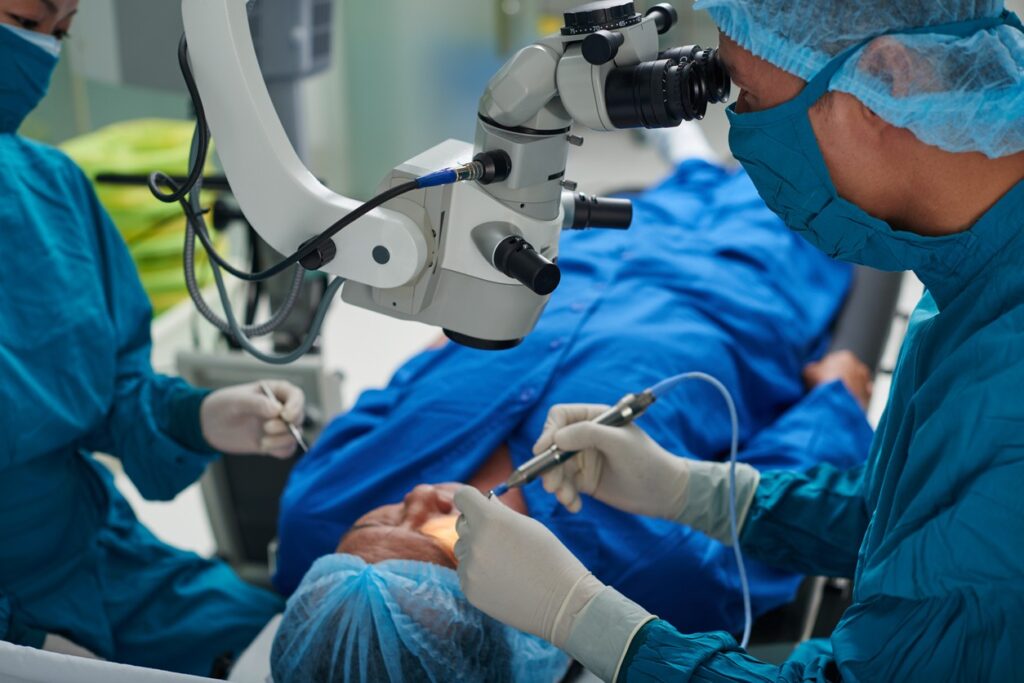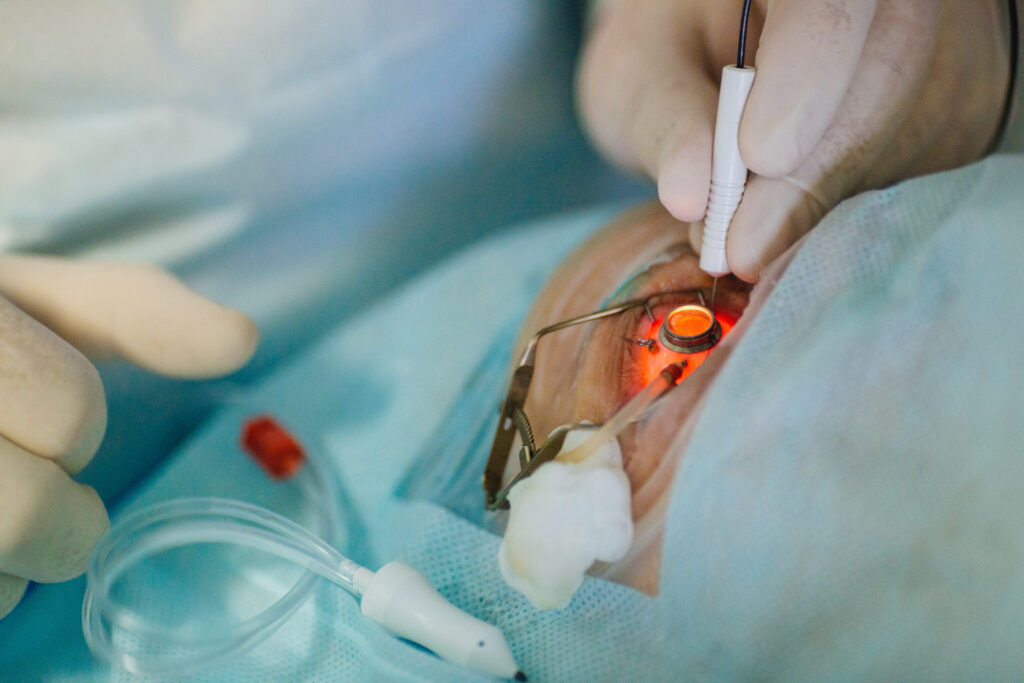
Understanding cataract eye surgery
Cataract eye surgery is a common procedure designed to remove cloudy lenses from the eye, thus restoring clear vision. Understanding the nature of cataracts and the reasons for undergoing surgery can help you make informed decisions about your treatment options. This section provides a comprehensive overview of the condition and the necessity of surgical intervention.
What is a cataract?
A cataract is a condition where the lens of the eye becomes opaque, leading to a gradual loss of vision. This clouding can be due to various factors, including age, genetics, and environmental influences such as exposure to UV light or certain medications. Over time, cataracts can inhibit daily activities and lower the quality of life.
Preparation for cataract eye surgery involves several critical steps aimed at ensuring the success of the procedure and the safety of the patient. This period can encompass initial consultations, assessments, and choosing the right healthcare professionals who will guide you through your surgical journey.
Most cataracts develop slowly and may not require immediate treatment. However, as the condition progresses, individuals may notice blurry vision, difficulty with night vision, and increased sensitivity to light. Regular eye examinations are crucial in detecting cataracts early and determining when surgical intervention may be necessary. In addition, lifestyle factors such as smoking and poor diet have been linked to the development of cataracts, highlighting the importance of maintaining a healthy lifestyle to potentially mitigate risk factors.
The need for cataract surgery
Cataract surgery is typically recommended when the loss of vision interferes with daily activities. Individuals may struggle with tasks such as reading, driving, or watching television due to blurred or distorted vision caused by cataracts. The decision to proceed with surgery often arises after consultations with an ophthalmologist, who evaluates the severity of the cataract and its impact on the patient’s quality of life.
It’s essential to understand that cataract surgery is generally safe and one of the most performed surgical procedures worldwide. With the advent of modern techniques and technology, the success rate of this surgery is impressively high, making it a viable option for many suffering from cataracts. Furthermore, advancements in intraocular lens (IOL) technology allow for personalised solutions, enabling patients to choose lenses that can correct not only for cataracts but also for other refractive errors, such as astigmatism or presbyopia. This means that many patients may experience improved vision at multiple distances, reducing their dependence on glasses post-surgery.

Preparing for cataract eye surgery
Initial consultations and assessments
The journey towards cataract surgery begins with an initial consultation, where an ophthalmologist will conduct a comprehensive eye examination. This may include visual acuity tests, measurements of the eye’s shape and size, and assessments of the overall eye health. Additionally, the doctor will discuss your medical history, current medications, and any other health issues that could influence the procedure. Read more about measurements on http://dme.pieas.edu.pk/labs/measurement-and-instrumentation-lab/
During these consultations, take the opportunity to ask questions about the surgery, potential risks, and expected outcomes. Understanding the entire process can alleviate concerns and empower you as a patient, allowing you to be an active participant in your healthcare. It is also advisable to consider keeping a journal of your symptoms and any changes in your vision leading up to the appointment, as this can provide valuable information to your ophthalmologist and aid in tailoring the best treatment plan for you.
Choosing the right surgeon
Selecting a qualified and experienced surgeon is a crucial step in the preparation process. It is recommended to look for a consultant ophthalmologist who specialises in cataract surgery and possesses a good track record supported by patient testimonials and reviews.
Consider seeking out recommendations from family, friends, or your general practitioner, who might provide insights into practitioners they trust. When consulting with potential surgeons, make sure to inquire about their experience, the technology they use, and how they handle potential complications. Additionally, it may be beneficial to visit the surgical facility beforehand, as this can help you become familiar with the environment and reduce anxiety on the day of the procedure.
Read more on: Where to Get the Best Cataract Surgery in Sydney
Pre-surgery instructions
Once you’ve chosen a surgeon and scheduled the surgery, you will receive specific pre-surgery instructions. These may include guidance on dietary restrictions, medication alterations, and tips for organising transportation for the day of the surgery.
It’s common for patients to be advised to avoid certain medications, particularly blood thinners, in the lead-up to surgery. Additionally, your surgeon may recommend bringing a friend or family member to assist you on the day of the procedure, ensuring a smoother experience during recovery. It is also wise to prepare your home for the recovery period by arranging a comfortable space where you can rest and ensuring that any necessary items, such as medications and eye drops, are easily accessible. Having a support system in place can significantly enhance your comfort and peace of mind as you navigate the post-operative phase.
The cataract surgery procedure
The cataract surgery procedure itself typically lasts between 15 to 30 minutes. Understanding what to expect during the surgery can help alleviate anxiety and prepare you adequately for the day.
An overview of the surgical process
The most common form of cataract surgery is phacoemulsification, where the cloudy lens is broken up into smaller pieces using ultrasound energy, outlined into the eye through a small incision. Once the lens fragments are removed, an artificial intraocular lens (IOL) is implanted in its place. This lens allows you to see clearly without the need for glasses in many cases. Click here to find more about incision.
The procedure is performed as an outpatient service, which means you will typically go home on the same day as your surgery. Most patients can return to some of their regular activities within a few days, but it’s vital to adhere to your surgeon’s recommendations regarding post-operative care. It is worth noting that the choice of IOL can vary based on individual needs; some patients may opt for multifocal lenses that can provide clear vision at various distances, while others may prefer standard monofocal lenses that focus on one distance, often requiring glasses for reading.
Anaesthesia and patient comfort during surgery
During cataract surgery, most patients are given a local anaesthetic, typically either in the form of eye drops or in injection, to numb the area around the eye. Patients remain awake, but they might be sedated lightly to enhance comfort and reduce anxiety.
Surgeons use advanced techniques and technology to ensure that the procedure is as pain-free and comfortable as possible. The use of magnification and bright lighting allows for precise work, facilitating a quicker recovery. Additionally, many clinics now employ the use of femtosecond lasers, which can further enhance the accuracy of the incisions and lens fragmentation, potentially leading to improved outcomes and reduced recovery times.

Post-surgery recovery: immediate aftermath
Once the procedure is complete, you will be taken to a recovery area where medical staff will monitor your condition for a short while before you are safe to go home. Many patients are surprised to find that they can already see better shortly after surgery, although it is normal for vision to fluctuate during the initial days.
Post-operative care typically includes using prescribed eye drops to prevent infection and manage inflammation. Patients are advised to avoid strenuous activities, rubbing the eyes, or exposing them to bright sunlight during the first few days following the surgery. It is also essential to attend follow-up appointments as scheduled, where your surgeon will assess the healing process and make any necessary adjustments to your treatment plan. Engaging in light activities, such as reading or watching television, is usually permitted, but patients should remain vigilant about their eye health and report any unusual symptoms, such as increased redness or pain, to their healthcare provider promptly.
Life after cataract surgery
After cataract surgery, adjustments in daily activities are often necessary, nurturing both short-term recovery and long-term outcomes. It is crucial to understand the changes you may experience and how to manage them for the best results.
Short-term recovery and healing
In the days following your surgery, it’s common to experience mild discomfort, blurred vision, and light sensitivity. These effects typically improve gradually over several days. It’s important to have regular follow-up appointments with your surgeon to monitor your healing process and ensure everything is developing as expected.
During this recovery phase, you might also need assistance with daily tasks. Avoid driving until your surgeon has cleared you to do so, and consider asking friends or family members for support. Engaging in light activities such as reading or watching television may be possible, but it’s advisable to limit screen time to prevent eye strain. Many patients find that wearing sunglasses outdoors helps alleviate light sensitivity and provides comfort during this healing period.
Long-term expectations and outcomes
Most patients experience significantly improved vision after cataract surgery, often achieving clarity they haven’t had for years. However, it’s important to note that while the surgery corrects the cataract, it does not eliminate the normal aging process of the eye, which may lead to other vision issues in the future. It’s worth considering that some patients may also benefit from additional corrective procedures, such as laser treatment, to address any residual refractive errors like astigmatism.
Long-term satisfaction rates for cataract surgery are high, with many patients expressing delight at the return to their daily activities. Regular eye examinations will remain essential for managing overall eye health and catching any new issues early. Furthermore, many individuals report a newfound appreciation for the world around them, rediscovering activities they once enjoyed, such as gardening or painting, with a clarity they thought lost forever.
Potential complications and how to handle them
While cataract surgery is overwhelmingly successful, complications can arise, as with any surgical procedure. These may include infection, bleeding, retinal detachment, and issues with the implanted lens. It’s vital to report any sudden changes in vision or increased pain to your healthcare provider promptly. Being proactive about your eye care can make a significant difference in your recovery journey.
Additionally, some patients may develop posterior capsule opacification, where the membrane holding the artificial lens becomes cloudy, necessitating a simple outpatient procedure known as YAG laser capsulotomy to restore vision. This procedure is quick and typically painless, allowing patients to return to their normal routines almost immediately. Understanding these potential complications can help you feel more prepared and less anxious about your recovery, ensuring that you remain vigilant and informed throughout the process.